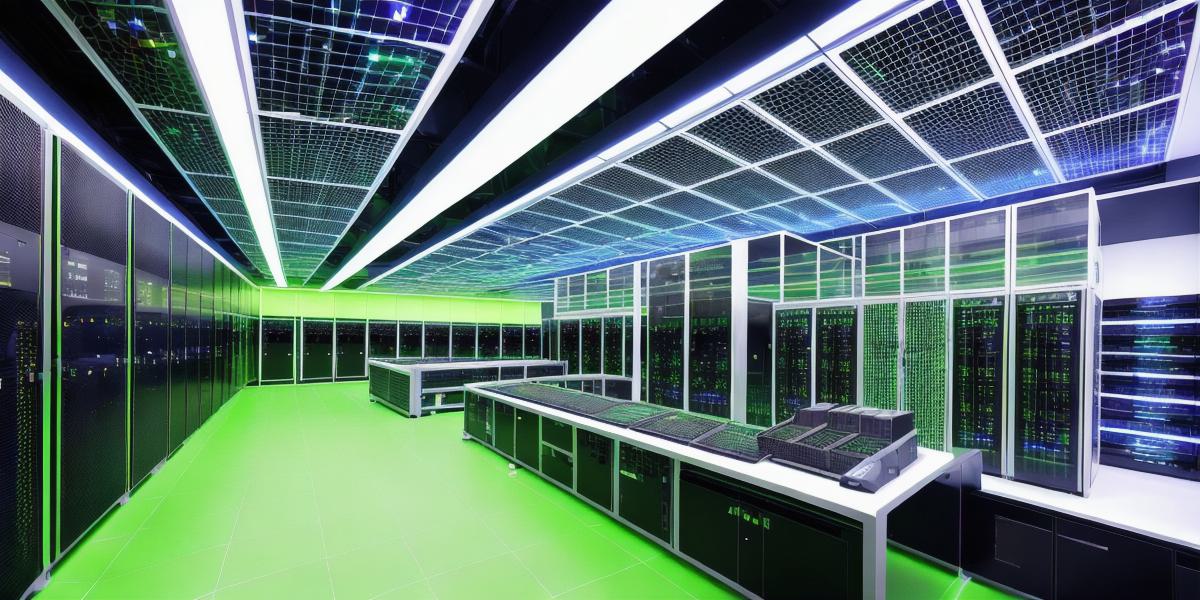In today’s digital age, data centers have become an essential infrastructure for businesses and organizations to store, process, and manage large volumes of data. Let’s delve into some of the latest updates and developments in this field that are shaping the future of data center technology.
1. Sustainability and Energy Efficiency
The environmental impact of data centers is a growing concern, and companies are focusing on reducing their carbon footprint. One of the solutions is the adoption of renewable energy sources, such as solar, wind, or hydroelectric power, to power data centers. For instance, Google has committed to using 100% renewable energy for its operations by 2030.
Another way to improve energy efficiency is through the use of innovative cooling technologies, such as liquid cooling or immersion cooling, which can reduce the amount of energy required to cool data centers. For example, Microsoft’s Project Natick experimented with underwater data centers to take advantage of natural cooling.
2. Edge Computing and Distributed Architectures
Edge computing brings data processing closer to the source, reducing latency and bandwidth requirements. This approach is becoming increasingly popular for applications that require real-time processing, such as IoT devices or autonomous vehicles.
One example of edge computing is IBM’s EdgeLink platform, which allows businesses to manage and analyze data from multiple edge locations through a unified interface. Another development is the rise of distributed architectures, such as blockchain networks, which can help reduce the need for centralized data centers by distributing processing power across a network of nodes.
3. Hybrid and Multi-Cloud Solutions
Many organizations are adopting hybrid and multi-cloud solutions to manage their data and applications more effectively. This approach allows businesses to leverage the benefits of multiple cloud providers, such as cost savings, improved performance, and increased flexibility. For example, Amazon Web Services (AWS) offers a range of hybrid cloud services, including Outposts and Fargate, which allow organizations to extend their on-premises data centers into the AWS cloud.
4. Artificial Intelligence and Machine Learning

Artificial intelligence (AI) and machine learning (ML) are revolutionizing data center design and operations. These technologies can help optimize power usage, improve network performance, and enhance security. For instance, Google’s AI-powered data centers use predictive analytics to identify and address potential issues before they cause downtime.
Moreover, AI and ML are essential components of many data-intensive applications, such as autonomous vehicles or medical imaging. As a result, data centers must be designed to support these workloads, which require massive amounts of processing power and memory.

5. Security and Compliance
Data security is a top priority for organizations, and data centers are no exception. With the increasing number and sophistication of cyber attacks, it’s crucial to implement robust security measures at every stage of the data center lifecycle. For example, using multi-factor authentication, encryption, and access control policies can help protect against unauthorized access.
Additionally, compliance with industry regulations, such as GDPR or HIPAA, is a significant challenge for many organizations. Data centers must ensure that they meet strict security and privacy requirements to avoid costly fines and reputational damage.
In conclusion, the world of data centers is continuously evolving, driven by advances in technology, changing business needs, and increasing environmental concerns. By staying informed about these trends and developments, businesses can make informed decisions about their data center strategies and investments. Whether it’s adopting renewable energy sources or implementing edge computing solutions, there are numerous ways to optimize your data center operations and stay competitive in today’s digital landscape.
